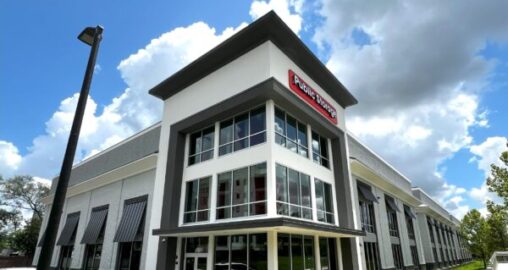Going the ‘Last Mile’
August 29, 2018 | Beth Glavosek | Blue Vault

It’s no secret that e-commerce has taken off exponentially, and part of what drives consumers’ online shopping behaviors is the ability to receive products quickly.
Getting products delivered in as timely a manner as possible requires “reducing the friction.” In a broad sense, this friction includes any obstacle that would discourage customers’ purchases or cause them to abandon items in an online shopping cart.
Speed of delivery is certainly part of the buying decision process. That’s why e-commerce is a strong and growing industrial demand driver in the current market. Storing goods closer to the end user obviously decreases the amount of time that they’re spent in transit.
Demand projections
According to the latest report from the U.S. Census Bureau, e-commerce is growing in the double digits year over year. Each quarter since early 2017 has posted a 15%-16% increase over the same quarter the previous year.
With e-commerce sales currently accounting for 9.6% of all retail sales and growing, demand for industrial facilities continues to increase. In fact, it’s been said that online retail fulfillment centers require three times the square footage of warehouse space as traditional warehouses used to stock stores. In addition, bricks and mortar retailers are also investing in their supply chains to improve distribution channels.
Going the ‘last mile’
Supply chains have traditionally relied on ‘bulk’ suburban centers that are larger in size (typically more than 500,000 square feet) and are in regional or national/global locations outside urban core areas. These are your large buildings with high ceiling heights and deep truck bays.
While there’s still a need for bulk warehousing, light industrial buildings are providing more nimble coverage of heavily populated cities. These warehouses are closer in proximity to the urban core and are smaller, narrower buildings that can more easily deliver efficient last mile service. In most cases, the customer lives near the facility.
In an in-depth look at last mile delivery, Supply Chain Dive identified city warehouses as one of the trends and solutions for delivery demands and eliminating ‘friction’ between initial purchase to package drop-off.
The report cited Amazon Prime as a major disruptor and stated that “there were at least 58 Amazon Prime Now hubs in the U.S. last year for customers demanding same-day instant delivery. The growing trend is for companies to build or take advantage of this urban warehouse space and have easy access to products for fast customer deliveries.”
Recent activity among nontraded REITs
On March 9, 2018, Blackstone REIT acquired a 22-million square foot industrial portfolio for approximately $1.8 billion. The Canyon Industrial Portfolio consists of 146 last-mile infill warehouses and distribution buildings concentrated in Chicago, Dallas, Baltimore/Washington DC, Los Angeles/Inland Empire and South/Central Florida. The tenants include Amazon, FedEx, DHL, Fiat Chrysler, and the US Government. The last-mile industrial market is a coveted asset class, outperforming the bulk industrial market thanks to the rising demand created by e-commerce, tighter supply chains and population growth in urban areas.
Cole Office & Industrial REIT (CCIT II) derives 12% of its lease income from Amazon.com. It owns an Amazon distribution center in Petersburg, Virginia, and an Amazon distribution center in Ruskin, Florida.
Since January 2018, other nontraded REITs have completed nine transactions to acquire warehouse/distribution centers encompassing a combined 3.3 million square feet of leasable area. The REITs and the number of transactions include Black Creek Industrial REIT IV (3), RREEF Property Trust (3), Griffin Capital Essential Asset REIT (2), and Cole Real Estate Income Strategy (Daily NAV) (1).
Recent Activity Source: Blue Vault











